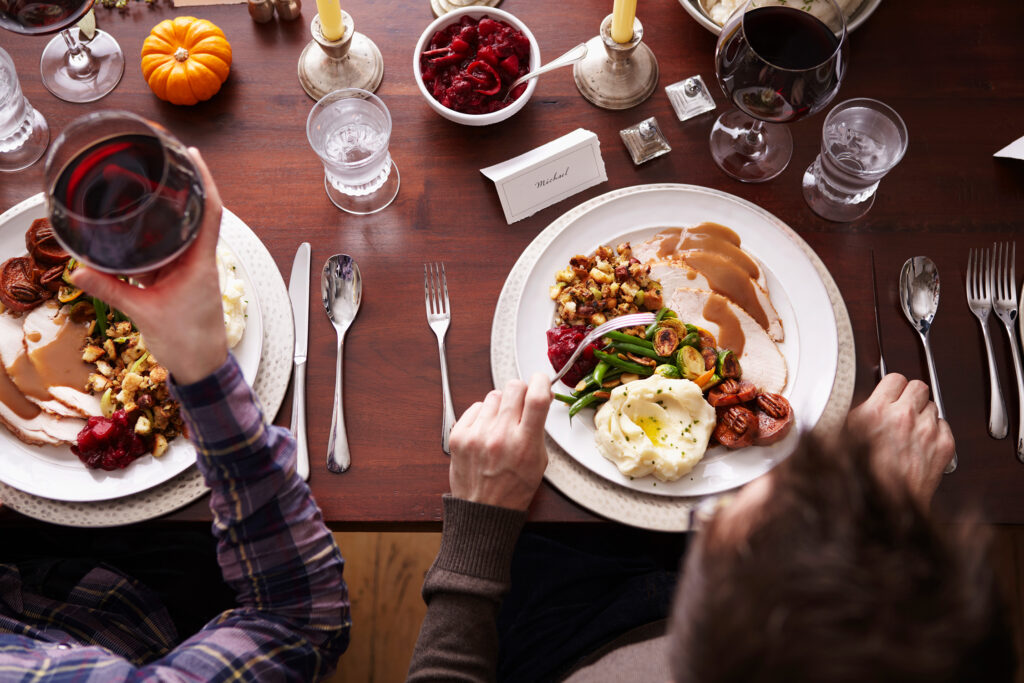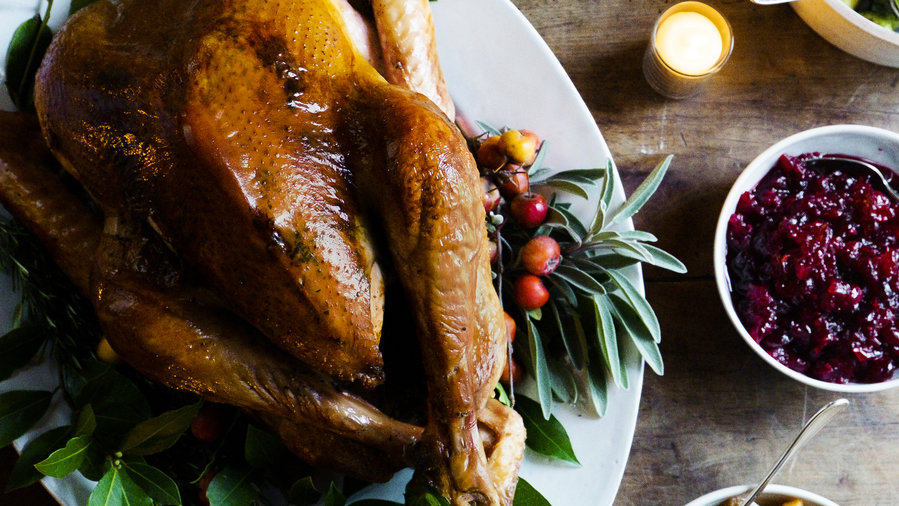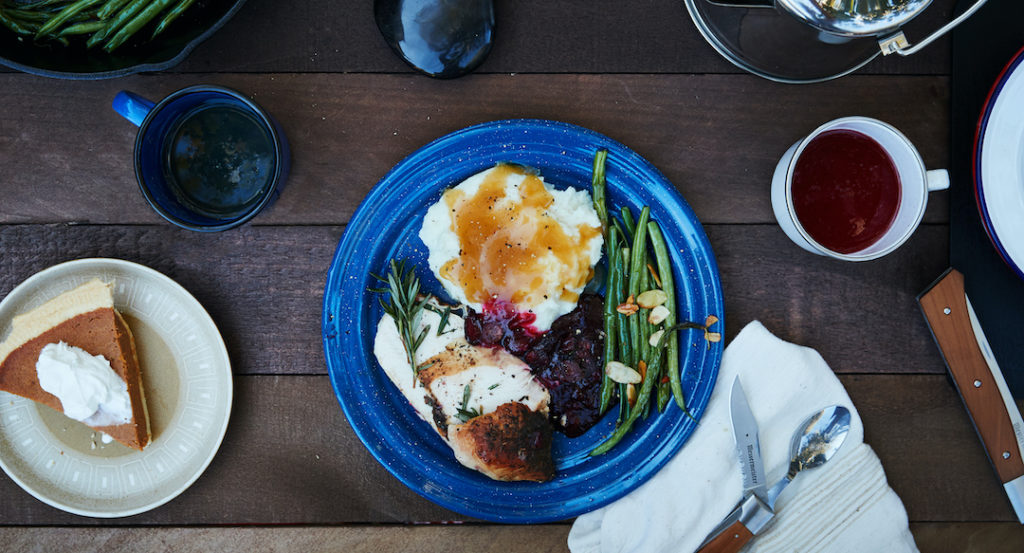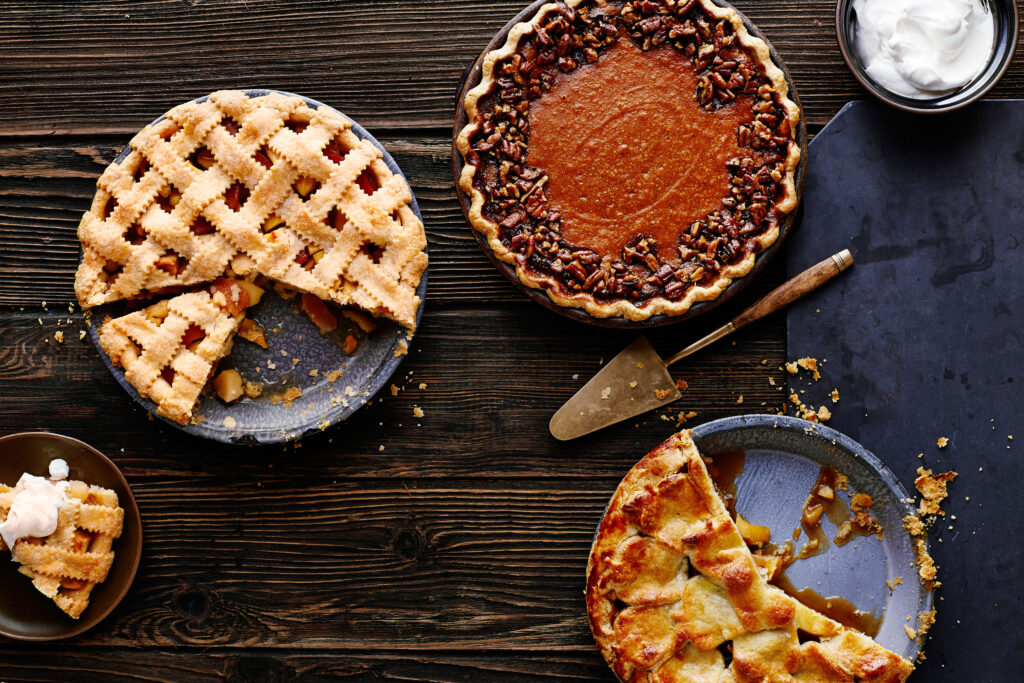
Here’s How to Save Money on Thanksgiving Dinner, According to Professional Chefs
What you should splurge on and what you can save on.

Hosting a Thanksgiving gathering is no easy feat. And while it’s fun to host and bring your loved ones together, it can be a lot of work. There’s a lot of planning involved—you’ve got to finalize the guest list, create the menu, go grocery shopping, start prepping days in advance… the list goes on and on. Not to mention, it can also be an expensive endeavor.
The good news is prices do seem to be going down this year. According to the American Farm Bureau Federation, the average cost for a classic holiday feast for 10 came out to $61.17 in 2023, which was down 4.5% compared to 2022, but up 25% compared to 2019. As for what to expect this year, the Louisville Courier Journal reports that while total food prices are up 2.3% compared to last year, experts say you might be paying less for a turkey this year. The price of turkey is down around 2%, and there’s a noticeable drop this year in prices for traditional Thanksgiving food items like potatoes and bread for stuffing.
While that sounds pretty good for everyone’s wallets this holiday season, hosting a feast will still cost you. But there are things you can do to save money—we asked professional chefs for their best tips on what you should absolutely splurge on, what you can skimp on (or nix entirely), and how to stay under budget. Read their tips below and keep in mind as you’re planning your big gathering!

Maren Caruso/Getty Images
1. Plan Your Menu and Set a Budget
Once you solidify your guest list, it’s time to set the menu and budget. “Create a detailed menu and shopping list to avoid impulse purchases. Include dishes that use similar ingredients to minimize waste,” says Hany Ali, executive chef of Bolero Restaurante at Europa Village.
2. Keep the Menu Simple
It may be tempting to go all out on the appetizers, sides, desserts, and drinks, but if you’re working with a limited budget, don’t be afraid to keep it simple.
“Keep the menu limited: Focus on turkey as the protein, bake your own rolls (or go for affordable options like King’s Hawaiian rolls), add one or two vegetable sides, and include a starch,” says Tara Monsod, executive chef of ANIMAE in San Diego and Le Coq in La Jolla. “Use rice and stuffing as fillers to make the meal feel complete without making more side dishes.”
It helps to know your crowd, too. Executive Chef Ashley Robertson of The ART Hotel Denver suggests that add-ons can be skipped, depending on what you love with your meal—like cranberry sauce or extra side dishes—if your guests aren’t into those things.
And it’s okay to nix the fancy appetizers. “Instead of purchasing expensive hors d’oeuvres, opt for simple snacks like chips and salsa, veggies and dip, or a cheese platter made with budget-friendly cheeses,” says Ali.

Iain Bagwell
3. Focus on Portion and Quantities
“The biggest unnecessary expenses when hosting Thanksgiving come down to portion and quantities,” explains Massimo Falsini, chef partner of Caruso’s at Rosewood Miramar Beach. “I would suggest never compromising on quality but focus on modulating portions and quantities.”
Chris Knouse, executive chef of Harvest at Castle Hot Springs, says the average meal is about a pound in weight, but Thanksgiving tends to be the biggest holiday for overeating, so bank on meal weights being around two pounds.
“Plan for about one pound of turkey per person,” Knouse explains. “If you like turkey sandwiches the next day, bump it up to 1½ pounds per person. Mashed potatoes and stuffing/dressing are the next highest eaten items—at least 8 oz each of these per person, and one cup of gravy per person. After that, you are looking for only a few ounces (3 or 4) of the other favorite sides. One and a half slices of pie per person should suffice unless you have an uncle who sneaks a slice or two the day before.”
When shopping for groceries, Falsini says you should consider a 30% loss due to cooking, cleaning, or preparing. “Remember to consider the three different kinds of food: AP (As Purchased), RTC (Ready to Cook), RTE (Ready to Eat),” he explains. “If you begin with a potato, for example, it will be an AP that you’ll turn into an RTC after peeling it, then an RTE when it becomes mashed potatoes. Consider what expands when cooked, what shrinks, and what the final RTE amount will be for each ingredient.”

Thomas J. Story
4. Splurge on the Turkey
Pretty much every chef we spoke to says the turkey is the star of the show, so therefore, you should splurge on it. “A high-quality, responsibly-sourced turkey can have superior flavor and texture,” adds Thomas George, executive chef of Bombay Brasserie in San Francisco.
5. Know Which Other Ingredients to Save on, and Which to Splurge on
“Staples like potatoes, onions, and other root vegetables are usually affordable and versatile, so there’s no need to splurge here,” says George. “Another good area to save is on bread—homemade stuffing from day-old bread can be both economical and flavorful.”
The ingredients you will want to splurge on, though, are the things that flavor the meal, like fresh herbs. “People should always splurge on good olive oil, butter, and quality meat—you’ll taste the difference!” Monsod says.

Thomas J. Story
6. Shop Early
Prices tend to go up closer to the holiday (and things run out), so chefs recommend buying non-perishables early. “Purchase ingredients in bulk, especially staples like flour, sugar, and grains. This can be more economical, especially if you plan to use them for other meals,” Ali explains.
7. Avoid Pre-Made Dishes
Sometimes you don’t have time to make everything from scratch, and that’s fine. But if you’re able to, avoid buying pre-made dishes as it can be more expensive.
And that goes for condiments and sauces, too. “Consider skipping specialty spice blends or pre-made sauces,” George says. “These can often be made at home with a few basic spices, which you may already have in your pantry. For example, a homemade gravy with a simple stock can be just as delicious as any store-bought option.”
8. Ask Your Guests to Bring Something
Usually your guests will ask, “What should I bring?” Don’t be afraid to take them up on the offer. “I find one of the easiest answers is dessert!” says Executive Chef Tiffany Fox of RPM Italian in Las Vegas. “This gives you a lot of wiggle room for friends to pick up something from a bakery on the way or spend time making something to impress. I like to leave it up to them and this also relieves the stress of an entire course from the one hosting!”
Whether you ask them to bring a side dish, dessert, or a drink, it will definitely take a little bit of the load off from your hosting duties.

Iain Bagwell
9. Consider Alternatives
It’s not blasphemous to skip the whole turkey—do what works for you! “Consider buying just the turkey legs or breast, especially for smaller gatherings,” Monsod says. “With proper brining, these cuts can be just as flavorful and cook faster.”
You can even ditch the turkey altogether and go for another protein like ham, or even a hearty vegetarian main dish, which might be more economical, Ali adds.
10. Calculate Your Bar Needs
“Wine and spirits can be the biggest expenses at Thanksgiving dinner, but they’re worth it! Family gatherings can sometimes get a little tense, so having a thoughtfully chosen selection of wines to pair with dinner—and a few other spirits to lighten the mood—can make all the difference,” says Aidan Owens, culinary director at Herb & Wood and Herb & Sea in San Diego.
“If serving wine, plan for about half a bottle per person (or one drink per person for every hour of the event),” Ali says. “For non-alcoholic beverages, plan for about one to two drinks per person.

Thomas J. Story
11. Focus on the Food
Don’t feel pressured into going over budget to create a beautiful, Pinterest-worthy tablescape. For inexpensive arrangements, look to places like Trader Joe’s. Use some of the decor and textiles you might already have at home to decorate the table.
“I would not overspend on table settings and fancy decorations,” Falsini says. “Instead, focus on the food and the conviviality. Guests come to stay with family and friends and have a delicious meal, and the food should take center stage.”
12. Don’t Try to Please Everyone
You should make sure your guests feel comfortable and their dietary restrictions are taken into account, but don’t feel like you need to spend a fortune creating a personalized, luxe experience for each person. “This is especially important when having larger events,” says Fox. “Trying to get everyone’s favorite drinks and food gets expensive. Instead vie for good quality basics (like beer and wine)—oftentimes, people come bearing gifts and that leaves you with quite a bit left over at the end of the night.”
13. Have a Plan for Leftovers
It’s the best part! “Do not let all of the extra food and hard work go to waste. I typically get at least three extra days out of the leftovers,” says Executive Chef Russell LaCasce of ZuZu at Hotel Valley Ho in Scottsdale.
